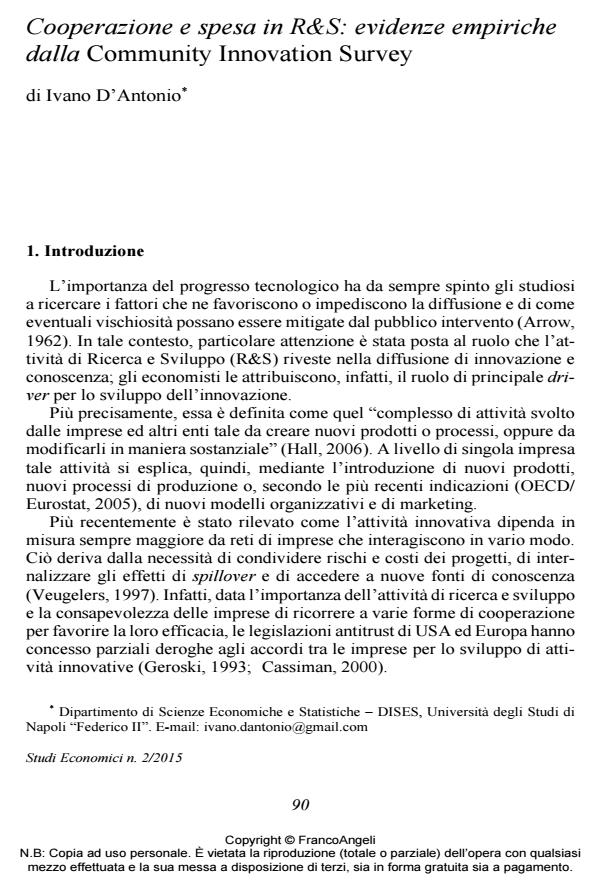R&D effort and cooperation: evidence from the Italian Innovation Survey
Journal title STUDI ECONOMICI
Author/s Ivano D'Antonio
Publishing Year 2016 Issue 2015/116
Language Italian Pages 21 P. 90-110 File size 298 KB
DOI 10.3280/STE2015-116004
DOI is like a bar code for intellectual property: to have more infomation
click here
Below, you can see the article first page
If you want to buy this article in PDF format, you can do it, following the instructions to buy download credits

FrancoAngeli is member of Publishers International Linking Association, Inc (PILA), a not-for-profit association which run the CrossRef service enabling links to and from online scholarly content.
R&D activities are carried out through the introduction of new products, new processes or, according to the latest indications (OECD / Eurostat, 2005), through new organizational and marketing levels. These activities increasingly depends by the firm’s ability in interacting with other subjects (firms, research centers), so that they can share risks and costs of the projects, internalize spillover effects, access to new sources of knowledge (Veugelers, 1997). However, there is not unanimous consent whether these interaction’ forms determine an increase of firms’R&D costs. The object of the paper is to verify if cooperation agreements influence firms’ expenses in innovative activities, and if there are complementary or substitution effects. Using data from the Community Innovation Survey (CIS) of 2008 referred to Italy, a double hurdle model is estimated and a positive and statistically significant effect of cooperation on R&D investment is found.
Keywords: R&D investment, R&D cooperation, Italian Innovation Survey, Double hurdle model.
Jel codes: O32; O33; L20.
Ivano D'Antonio, Cooperazione e spesa in R&S: evidenze empiriche dalla Community Innovation Survey in "STUDI ECONOMICI " 116/2015, pp 90-110, DOI: 10.3280/STE2015-116004